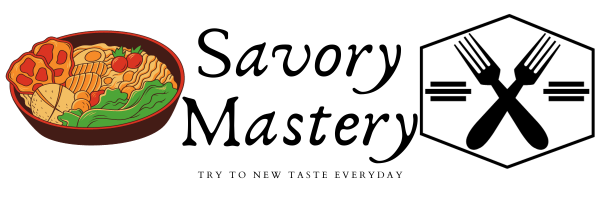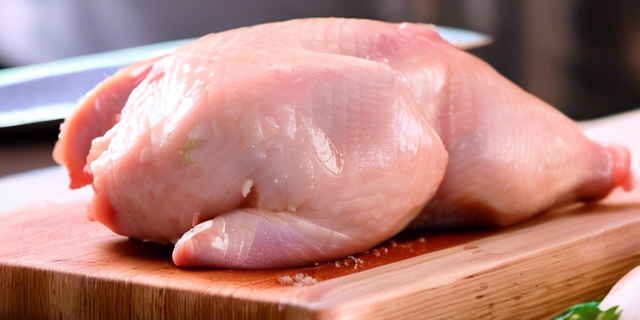Introduction
Welcome to a gastronomic journey where the magic happens—Types of Cooking Methods. Ever wondered why your grandma’s stew tastes like a warm hug? Or why that celebrity chef’s steak is a flavor explosion? It’s all in the method.
A. Importance Unveiled:
Cooking methods are the unsung heroes, shaping taste, texture, and overall dining experience. They’re the secret behind your favorite dishes’ mouthwatering allure.
B. Crafting Culinary Symphony:
Picture this: a chef wielding tools, orchestrating a culinary symphony. Each cooking method, like a musical note, contributes to the final masterpiece—the dish on your plate.
C. Sneak Peek into Culinary Wonderland:
In this culinary exploration, we’ll traverse dry heat marvels like baking and grilling. Then, we’ll dive into the world of moist heat wonders through boiling, steaming, and more. Brace yourself for a feast of knowledge!
Get ready to unravel the mystery behind your kitchen’s alchemy, where pots and pans transform ingredients into culinary wonders. Join me as we embark on a flavorful expedition through the enchanting world of cooking methods. The kitchen awaits—let the adventure begin! 🍳✨
Understanding the Basics
Cooking is more than a dash of this and a pinch of that. Let’s demystify the basics, shall we?
A. Definition of Cooking Methods:
Cooking methods are the techniques we use to transform raw ingredients into delightful meals. From sizzling pans to gentle steam, it’s the kitchen’s magic show.
B. The Right Match:
Imagine if every dish were cooked the same way. Chaos, right? Choosing the right cooking method is like finding the perfect dance partner. Some ingredients waltz with a sauté, while others tango with a slow braise.
C. Flavor and Texture Dance:
Ever wondered why grilled chicken tastes different from a stewed one? Cooking methods are the choreographers, directing the flavor and texture of dance. Grilling brings a smoky crunch while stewing whispers tenderness.
Now, armed with the basics, you’re not just cooking; you’re conducting a symphony of flavors and textures. Ready to don your chef’s hat? Let’s create culinary poetry in motion! 🍽️🎶
Common Types of Cooking Methods
Embark on a journey through the heart of the kitchen, where cooking methods paint the canvas of flavor. Let’s dive in!
A. Dry Heat Cooking Methods:
- Baking: Heat wraps your ingredients, creating golden crusts and tender insides. Cakes, cookies, and bread, oh my!
- Roasting: High heat transforms meats and vegetables into savory masterpieces. Picture crispy skin on a perfectly roasted chicken.
- Grilling: Flames dance, infusing a smoky charm into your favorite barbecue delights. Burgers, veggies, or that perfect steak, anyone?
- Sautéing: Quick and vibrant, this method adds a touch of crispness to veggies and meats. Perfect for stir-fries and quick dinners.
- Frying (Deep and Shallow): Dive into the world of crispy goodness. Whether deep-frying or shallow-frying, think crispy fries or golden tempura.
B. Moist Heat Cooking Methods:
- Boiling: Simplicity at its best. Pasta, veggies, or eggs take a hot bath until perfectly cooked. Quick and effective!
- Steaming: The gentle touch. Nutrients stay put, and flavors mingle harmoniously. Ideal for fish, veggies, and even dumplings.
- Poaching: A gentle simmer births tender results. Fish, eggs, or fruits take a leisurely dip in flavorful liquids.
- Simmering: Low and slow, the unsung hero behind stews and soups. Flavors meld, and tougher cuts become melt-in-the-mouth.
- Braising: The marriage of searing and simmering. Tough meats turn tender as they bathe in savory liquids. Pure comfort!
C. Combination Cooking Methods:
- Sous Vide: Precision meets perfection. Ingredients sealed in bags dance in a water bath, emerging with unparalleled tenderness.
- Stewing: A cozy affair where ingredients swim in a flavorful broth. Think hearty stews and comforting casseroles.
- Pressure Cooking: Fast and Furious. Tough cuts soften swiftly under pressure. Soups, beans, and even desserts in record time!
Now that we’ve unveiled the arsenal of cooking methods, your culinary adventure awaits. Mix and match, experiment, and savor the symphony of flavors at your fingertips. Happy cooking! 🍳🌟
Benefits and Drawbacks of Each Cooking Method
Welcome back to our culinary exploration! As we don our aprons, let’s uncover the health and flavor secrets hidden in each cooking method.
A. Health Implications:
- Baking:Pros: Retains nutrients, minimal added fats.Cons: High temperatures may reduce certain nutrients.
- Frying (Deep and Shallow):Pros: Quick and tasty.Cons: Excess oil can lead to higher calorie intake.
- Boiling:Pros: Preserves nutrients, simple.Cons: Water-soluble nutrients may leach into the water.
- Steaming:Pros: Preserves nutrients, minimal fat.Cons: May affect water-soluble vitamins.
- Sous Vide:Pros: Precise cooking, minimal nutrient loss.Cons: Lengthy cooking times.
B. Impact on Flavor and Nutritional Content:
- Roasting:Flavor: Intense and savory.Nutrition: Retains nutrients, enhances flavors.
- Sautéing:Flavor: Quick and vibrant.Nutrition: Minimal nutrient loss.
- Simmering:Flavor: Rich and comforting.Nutrition: Nutrients blend into the broth.
- Grilling:Flavor: Smoky and charred.Nutrition: Possible formation of harmful compounds; lean proteins shine.
- Pressure Cooking:Flavor: Speedy and intense.Nutrition: Retains nutrients with reduced cooking time.
C. Best Applications for Each Method:
- Braising:Best For: Tough cuts of meat, creating flavorful stews.
- Steaming:Best For: Delicate veggies, fish, and preserving nutrients.
- Deep Frying:Best For: Crispy delights like fries, tempura.
- Boiling:Best For: Pasta, hardy vegetables, and quick meals.
- Sautéing:Best For: Quick-cooking veggies, proteins for stir-fries.
As we navigate the world of cooking methods, remember, there’s no one-size-fits-all. The key lies in balance and variety. So, let your taste buds lead the way as you whip up your culinary masterpieces! 🌽🥩🔥
Choosing the Right Cooking Method
Hello, culinary enthusiasts! Today, let’s dive into the art of selecting the perfect cooking method—your recipe’s secret weapon.
A. Factors to Consider When Selecting a Cooking Method:
- Time Constraints: Quick Tip: Opt for quicker methods like sautéing or boiling on busy nights.
- Flavor Goals: Quick Tip: Roasting and grilling enhance flavors, while simmering creates rich, comforting tastes.
- Nutritional Focus: Quick Tip: Steaming and baking maintain more nutrients than deep frying.
- Texture Preferences: Quick Tip: Crispy delights? Try frying. Tender meats? Think braising.
B. Matching Cooking Methods to Specific Ingredients:
- Delicate Veggies (e.g., Asparagus, Spinach): Ideal Methods: Steaming, sautéing to preserve textures and flavors.
- Lean Proteins (e.g., Chicken Breast, Fish): Ideal Methods: Grilling, baking, or steaming for healthier results.
- Root Vegetables (e.g., Potatoes, Carrots): Ideal Methods: Roasting or boiling for a hearty, savory outcome.
- Tough Cuts of Meat (e.g., Beef Brisket, Pork Shoulder): Ideal Methods: Braising or slow-roasting for tenderness.
C. Experimenting with Different Methods for Unique Outcomes:
- Flavorful Fusion: Try: Marinating proteins before grilling for an extra flavor kick.
- Texture Play: Try: Sautéing veggies briefly before simmering to mix textures.
- Time-Saving Hacks: Try: Pressure-cook tough meats before finishing them on the grill for a smoky touch.
- Creative Combinations: Try: Bake then broil for a dish with a crispy top and moist interior.
Remember, your kitchen is your playground. Don’t be afraid to break the rules, mix it up, and let your creativity shine. The right cooking method transforms a recipe from ordinary to extraordinary. Happy experimenting! 🍳🎨✨
FAQ Section
Welcome to the FAQ corner, where we unravel the mysteries of cooking methods. Let’s dive into some common questions to enhance your kitchen expertise.
Q1: What is the healthiest cooking method?
A: The healthiest cooking method depends on your goals. For preserving nutrients, try steaming or baking. For low-fat cooking, opt for grilling or boiling. Balance is key!
Q2: Can cooking methods affect the nutritional value of food?
A: Absolutely! Some methods, like boiling and steaming, help retain nutrients, while others, like deep frying, may lead to nutrient loss. Choose methods based on your nutritional priorities.
Q3: How does the cooking method impact the texture of the dish?
A: The cooking method plays a crucial role in texture. Grilling gives a crispy exterior, while simmering results in tenderness. Experiment to find the texture you desire.
Q4: Are there cultural influences on cooking methods?
A: Definitely! Different cultures have unique cooking traditions. For example, Asian cuisines often use stir-frying, while Mediterranean cuisines favor roasting and grilling.
Q5: Can cooking methods be combined for certain dishes?
A: Absolutely! Combining methods adds depth to your dishes. Try searing meat before slow-cooking or parboiling veggies before grilling for diverse textures and flavors.
Feel free to explore, experiment, and tailor your cooking methods to suit your preferences and dietary needs. Happy cooking! 🍲🔥
Tips and Tricks for Culinary Success
Welcome back to our culinary adventure! As we approach the final act, let’s uncover the secrets that transform good dishes into exceptional ones. Here are some tips and tricks for your culinary success.
A. Temperature Control:
- Invest in a Meat Thermometer: Why? Ensures your proteins are perfectly cooked without guesswork.
- Preheat Your Pans: Why? Achieves that perfect sear and even cooking.
- Master the Oven Temperatures: Why? Different dishes require different oven temperatures. Get familiar with them for the best results.
B. Timing Considerations:
- Prep Ahead: Why? Minimize stress during cooking by having ingredients prepped and ready.
- Use Timers:Why? Avoid overcooking or undercooking by setting timers for various cooking steps.
- Understand Resting Time: Why? Let meats rest after cooking for juices to redistribute, ensuring a moist result.
C. Essential Tools for Each Cooking Method:
- Grilling:Must-Have: Quality tongs for easy flipping without losing those precious grill marks.
- Sautéing:Must-Have: A sturdy, wide skillet for even cooking and ample space to toss ingredients.
- Baking:Must-Have: Precise measuring tools for accurate ingredient quantities.
- Boiling:Must-Have: A large, heavy-bottomed pot for efficient boiling and even heat distribution.
- Pressure Cooking:Must-Have: A reliable pressure cooker for quick and efficient meals.
Remember, every chef has their bag of tricks. These tips will not only make your cooking experience smoother but elevate your dishes to new heights. Now, armed with knowledge, it’s time to create culinary magic! 🍳✨
Conclusion
What a flavorful journey it’s been, exploring the vast landscape of cooking methods! As we conclude this culinary escapade, let’s recap the magic we’ve uncovered.
In the heart of every kitchen lies the alchemy of cooking methods. From the sizzle of a sauté to the slow dance of simmering, each method adds its own melody to the symphony of flavors on our plates.
Optimizing Your Culinary Skills with Types of Cooking Methods:Whether you’re a seasoned chef or a kitchen novice, understanding the nuances of these methods is like having a secret recipe book. You’re not just cooking; you’re crafting an experience.
Experiment, Innovate, Enjoy:The beauty of the kitchen is its canvas for creativity. Feel free to experiment with different methods, mix and match, and discover your signature style. Your kitchen is your playground; let your taste buds be the guide.
Empowered Cooking Choices:Knowing the ins and outs of various cooking methods empowers you to make conscious choices. Optimize your cooking based on health goals, time constraints, and the ingredients at hand. It’s a culinary compass that points towards deliciousness.
So, as you embark on your next culinary venture, armed with the knowledge of types of cooking methods, let the aroma of possibility waft through your kitchen. From baking delights to simmering stews, each method is a brushstroke in your culinary masterpiece.
Thank you for joining me on this delectable journey. May your kitchen adventures be filled with joy, discovery, and, of course, extraordinary flavors. Until next time, happy cooking! 🍽️🎉✨





